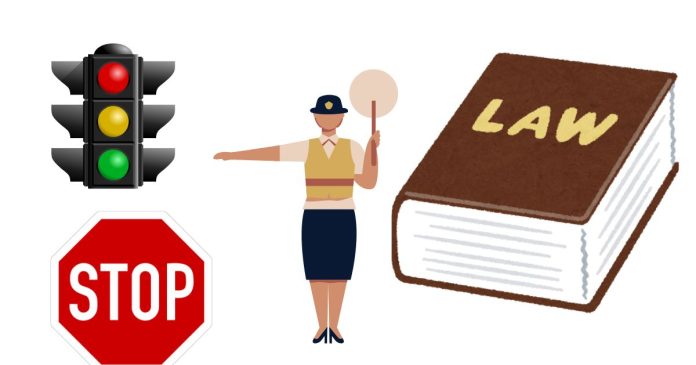Traffic laws are an essential part of any transportation system, designed to ensure that roadways are used safely and efficiently. These laws help regulate the flow of traffic, prevent accidents, and provide clear guidelines for all drivers, pedestrians, and cyclists to follow. Without such regulations, roads would become chaotic, dangerous, and highly prone to accidents. Here’s why traffic laws are so important:
1. Promoting Safety
The primary purpose of traffic laws is to promote the safety of all road users. Whether you’re driving a car, riding a bike, or walking, traffic laws are designed to protect everyone from harm.
- Speed Limits: Speed limits are set based on the road conditions and the surrounding environment. By enforcing speed limits, traffic laws reduce the likelihood of accidents caused by speeding, making roads safer for everyone.
- Traffic Signals and Signs: Stop signs, yield signs, and traffic lights regulate the flow of traffic, preventing confusion at intersections and ensuring that vehicles and pedestrians can move safely through areas with high traffic volumes.
- Seat Belt and Helmet Laws: Seat belt laws and helmet laws for cyclists help protect people from serious injuries in the event of a crash. They save lives by reducing the severity of injuries.
2. Enhancing Efficiency and Reducing Congestion
Traffic laws also contribute to the smooth flow of traffic, which helps reduce congestion and improve travel times. When everyone follows the same rules, traffic can move more predictably.
- Lane Discipline: Laws that govern lane changes, lane merging, and overtaking prevent accidents and ensure that drivers stay in their lanes, reducing confusion and preventing accidents caused by erratic movements.
- Turning and Parking Restrictions: Laws regarding when and where vehicles can turn or park help keep roads clear, prevent obstructions, and improve the flow of traffic, especially in busy urban areas.
3. Preventing Accidents and Reducing Road Rage
Without traffic laws, there would be no clear rules governing how drivers should behave in certain situations. This could lead to confusion, road rage, and an increase in accidents.
- Right of Way: Laws that specify who has the right of way at intersections, pedestrian crossings, and in various driving scenarios help prevent accidents caused by confusion or miscommunication between drivers.
- DUI Laws: Strict laws regarding driving under the influence of alcohol or drugs help reduce impaired driving, which is a leading cause of accidents and fatalities.
4. Encouraging Responsible Driving Behavior
Traffic laws help encourage responsible driving and hold drivers accountable for their actions. When drivers know they are being monitored and that violations can lead to fines, points on their license, or even jail time, they are more likely to follow the rules.
- Speeding Tickets and Fines: The enforcement of speeding and traffic violations through fines and penalties helps deter dangerous driving behaviors and encourages safer road usage.
- Driver’s License Points: Accumulating points for traffic violations can lead to a suspended or revoked license, encouraging drivers to drive more responsibly to maintain their driving privileges.
5. Protecting Pedestrians and Cyclists
Traffic laws are not just for vehicles; they also help protect pedestrians and cyclists, who are more vulnerable on the roads.
- Pedestrian Crosswalks: Traffic laws regulate where pedestrians can cross the street, ensuring that vehicles and pedestrians are aware of where crossing is safe.
- Bike Lanes and Rules: Laws that require cyclists to use bike lanes or follow specific road rules help reduce accidents involving bicycles, making streets safer for cyclists and other road users.
6. Providing Clear Guidelines for Emergencies and Special Situations
Traffic laws also help provide clear instructions for special circumstances, such as emergencies or unusual road conditions.
- Emergency Vehicle Right of Way: Laws that give emergency vehicles the right of way ensure that ambulances, fire trucks, and police cars can respond to emergencies without delay, potentially saving lives.
- Hazardous Road Conditions: In cases of bad weather or road construction, laws can dictate reduced speed limits and other measures that help drivers adjust to changing conditions and maintain control of their vehicles.
Conclusion
Traffic laws are essential in maintaining order, safety, and efficiency on the roads. They ensure that drivers, pedestrians, and cyclists all know how to navigate the streets in a way that minimizes risks and prevents accidents. By promoting responsible driving behavior, protecting vulnerable road users, and reducing traffic congestion, these laws help create a safer and more predictable driving environment. Whether it’s adhering to speed limits, following traffic signs, or respecting the rights of others on the road, traffic laws play a critical role in making our roadways safer for everyone.


